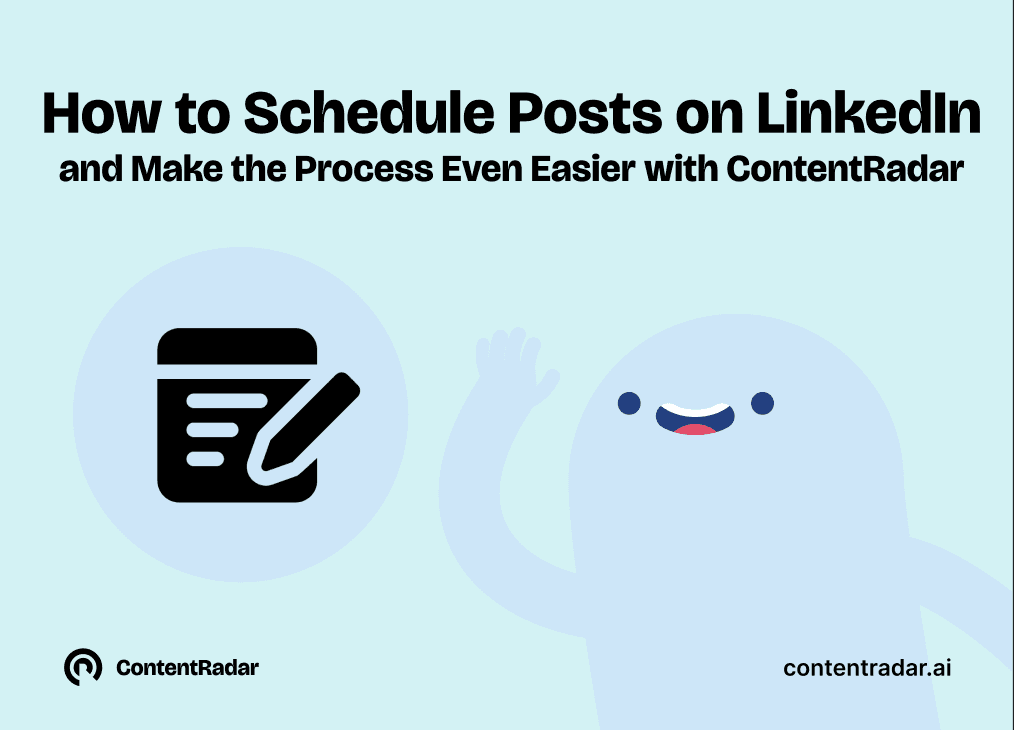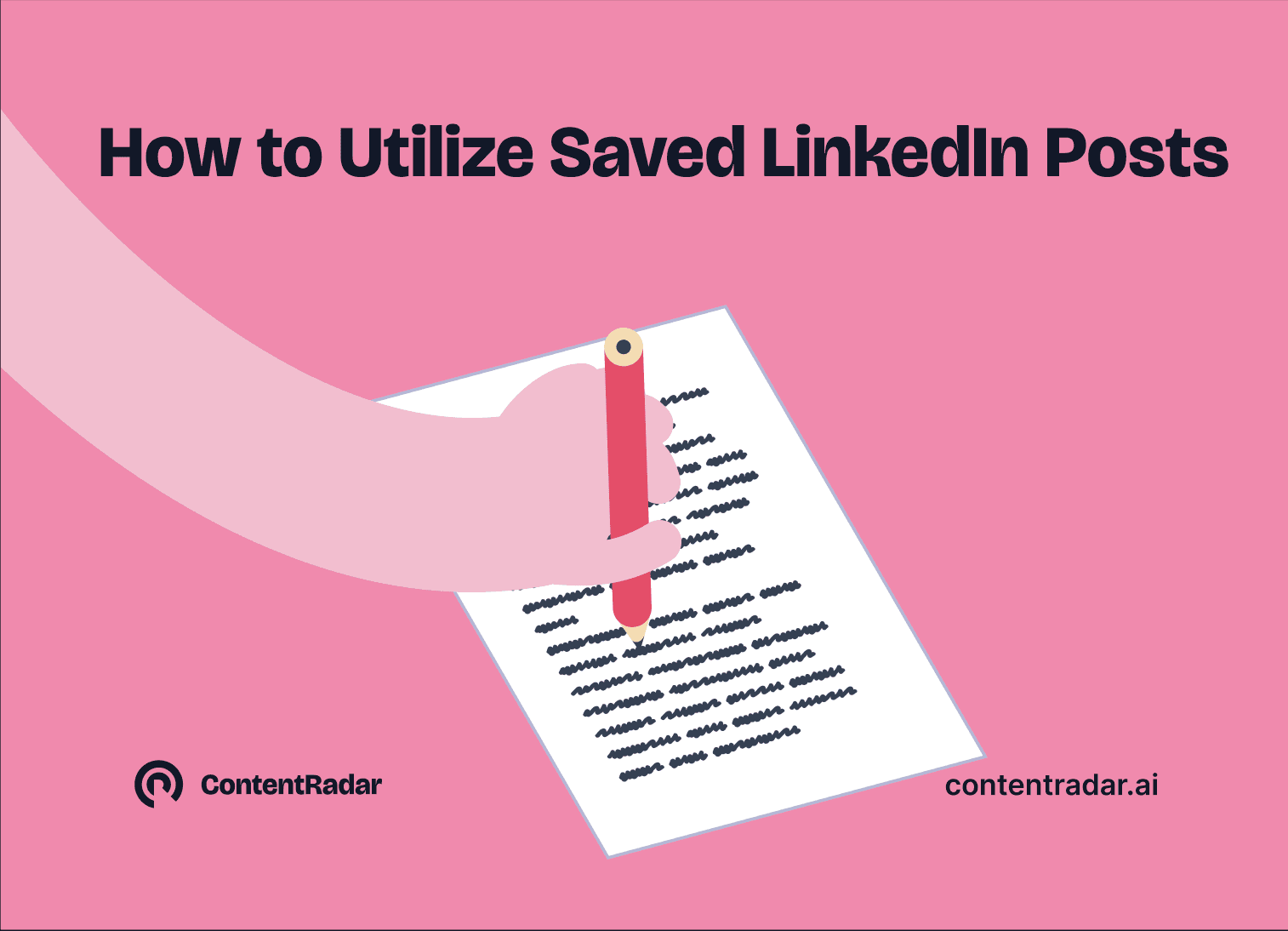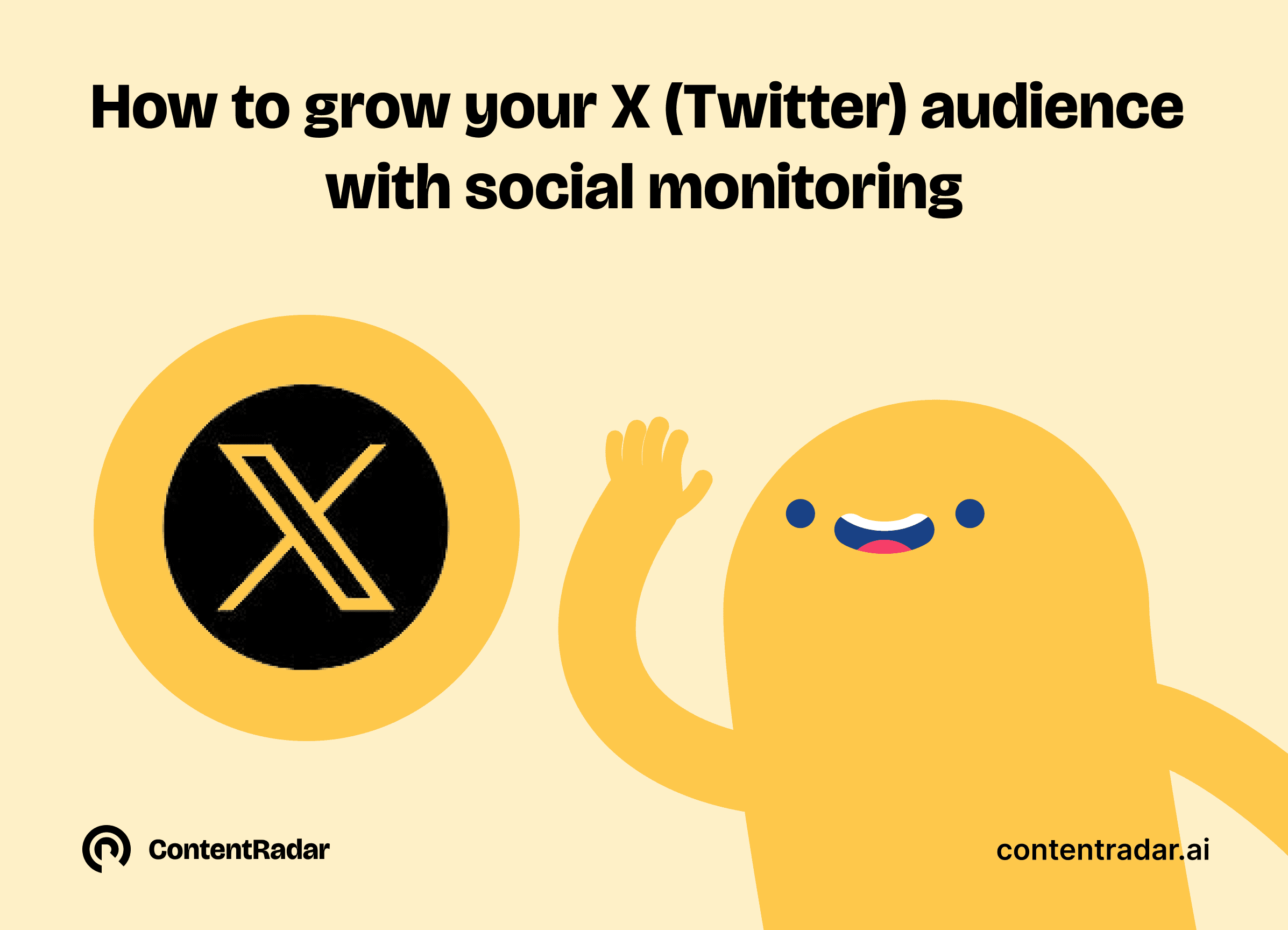How to grow your X (Twitter) audience with social monitoring

Oct 4, 2024
Are you looking to grow your X (Twitter) audience for your business profile? One strategy that is often overlooked, but can help accelerate your growth is social monitoring.
A lot of brands, especially in B2B, still view social media as a one-way street. They set up a strategy to post five times on X (Twitter) and three times on LinkedIn, and they react to inbound comments on those posts. While consistency in putting out your own content is crucial to grow and reach your audience, listening and learning through social monitoring is just as important.
Social monitoring involves keeping tabs on key conversations happening around specific keywords, brands, or topics that are important to your business and target audience. This strategy not only helps you grow your audience but also allows you to interact with them, gain insights, and inspire your own content creation.
Let’s dive into how you can grow your X (Twitter) audience with social monitoring…
1. Define the Keywords You Want to Monitor
First, choose what keywords, hashtags, or profiles you want to monitor. These keywords are the backbone of your monitoring strategy and will help you identify the right conversations to engage with. Here are a few categories of keywords to consider covering:
Monitor Your Company Brand or Product Names
Tracking mentions of your company or product name is invaluable. You'll be able to jump into conversations when people mention your business, even if they don’t tag you directly. This is your chance to engage with existing customers, answer questions, or provide additional value. You can use these posts as social proof, for example, ask the author if you can retweet their post or use it on your website.
Consider monitoring multiple versions of your brand name, including with and without your domain (e.g., contentradar.ai) or social handles (@contentradar_ai).
Monitor Keywords Related to the Problems You Solve
Monitoring industry-related keywords or phrases that describe the pain points your product addresses is key. For example, if you offer a project management tool, you could track terms like "project planning," "task management," or "team collaboration."
Tracking these terms will help you stay connected to people discussing industry topics and the problems you solve. Engaging with this content will allow you to attract the attention of relevant people who may checkout your product, follow you for more content, and spread the word to their community.
Monitor Competitors' Brands or Products
Monitoring your competitors can provide valuable insights. You can:
Learn from their content strategy.
Identify opportunities to showcase your product as a better solution.
Spot praise for their product and analyze what resonates with their audience - as this will be applicable to yours.
This data is crucial for staying competitive and understanding what the market values. Of course you shouldn’t copy their content 1 to 1, but you can be inspired and put your own twist on it if it applies to your business as well.
Monitor Customer Pain Points You Can Address
Your product should address specific pain points your audience faces. By tracking phrases related to those issues, such as “best social media monitoring tool” or “real-time alerts for social mentions,” you can position your solution when potential customers are looking for help.
2. Consistently Monitor Twitter in Real Time (set up a social monitoring tool)
Consistency is key when it comes to social monitoring. Twitter conversations move fast, so you need to stay on top of them in real time. However, manually tracking everything can be time-consuming and can take hours. You’ll soon notice that you want to also diversify from just twitter, so if you are tracking 10 keywords over 10 platforms - it will take time.
This is why it’s helpful to set up a robust social monitoring tool that can do this for you, and in real time. For modern B2B companies, we recommend an AI social monitoring tool Octolens. Octolens is built specifically for B2B companies, helping you monitor the conversations that matter (vetted by AI) in real-time, fed straight to your Slack or email inbox.
Getting to a post fast is important, especially on twitter where people are often posting multiple times a day with a very short lifetime of each post.
3. Add Genuine Value in the Comments
Once you've identified a relevant post through social monitoring, your next step is to engage. However, don’t just drop a sales pitch, a like, or a fire emoji. Engage thoughtfully by adding real value to the conversation. Share advice, answer questions, or give feedback that helps the user solve their problem. This not only builds trust but also encourages them to check out your profile or business.
Authenticity is critical here. People can spot a forced interaction, so always focus on providing genuine value.
A dead end comment like “agreed” will also not spark conversation or encourage the audience to follow you or look at your business.
Remember, a comment is a whole content piece on its own. This is especially true if you are starting out with a small audience. Your comments on other people’s content may reach much more engagement and impressions than your own channel posts. So invest thought and time, just like you would an original piece of content on your channel.
You can drastically increase your follower count on Twitter by setting a goal - for example, try to reply to 10-20 pieces of content every day and see how your growth accelerates after 1-2 months.
4. Measure Your Results & Review Your Keywords
As with any strategy, tracking your progress is essential. Use metrics like:
Engagement rate (likes, replies, retweets)
Follower growth
Website traffic from Twitter
Lead generation
Review these metrics regularly and adjust your keyword monitoring strategy based on the data. Perhaps you need to refine your keywords or add new ones as your business evolves.
Maybe certain keywords are leading you to irrelevant or low value posts - you may want to switch them up.
This constant iteration helps ensure you're always targeting the most relevant conversations.
5. Save Content That Resonates with Your Audience
Throughout your monitoring efforts, you’ll come across posts or comments that resonate with your audience. Save these as inspiration for future content ideas. You can use tools like Twitter's bookmark feature or integrate social monitoring tools like Octolens where you can bookmark posts to save and categorize these posts easily.
Put your own spin on the content you find, addressing it from your brand’s unique perspective. This helps keep your feed fresh and engaging.
Most Importantly, Keep At It
It’s easy to feel discouraged if you don’t see viral growth right away. But growing your Twitter audience takes time. Social monitoring isn’t a “quick fix,” but a long-term strategy to engage with your audience, provide value, and build connections.
You may want to give up after a few weeks, but push through! You’ll thank yourself greatly 6 or 12 months down the line.
Other Benefits of Twitter Social Monitoring
While growing your follower count is one benefit, social monitoring offers additional advantages, including:
Lead Generation: Identify people discussing problems your product can solve and engage with them directly.
Reputation Management: Stay on top of what people are saying about your brand and respond promptly to manage your online reputation.
Community Engagement: Build relationships by engaging in conversations within your industry and offering support where needed.
Product Feedback: Monitor discussions about your product to discover areas for improvement or gather social proof from satisfied customers.
Conclusion
Growing your X (Twitter) audience requires more than just posting regularly—it involves listening, engaging, and providing value in real time. Social monitoring enables you to stay connected with conversations that matter, helping you grow your following and build meaningful relationships with your audience.
Leverage tools to streamline the process, and remember to consistently measure your success and adjust your strategy. Social media success isn’t an overnight process, but with persistence and the right approach, you’ll see your efforts pay off.
Other articles

How to Block (and Unblock) Someone on LinkedIn
And When You Should
Discover how to effectively block and unblock someone on LinkedIn to maintain your professional space and privacy. This guide covers the reasons for blocking, step-by-step instructions for both blocking and unblocking, and the difference between blocking and disconnecting. Learn to manage your LinkedIn network confidently and ensure it remains a supportive environment for your professional growth.

How to Schedule Posts on LinkedIn
and Make the Process Even Easier with ContentRadar
Discover how to effortlessly schedule posts on LinkedIn to boost engagement and maintain consistency. Learn the benefits of scheduling, step-by-step instructions, and how ContentRadar can streamline your content creation and posting process. Maximize your LinkedIn presence with smart timing suggestions and AI-generated content!

How to Save LinkedIn Posts and Find Them Again
Master the LinkedIn Save feature with our quick guide! Learn how to bookmark posts, job listings, and insightful content for easy access later. Discover the benefits of saving posts, how to find your saved items, and tips for managing your saved content effectively. Stay organized and never lose track of valuable information again!
